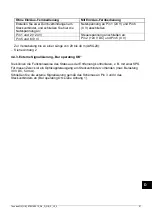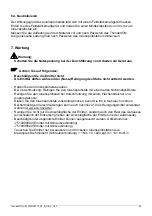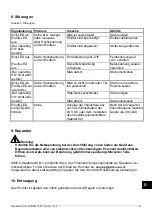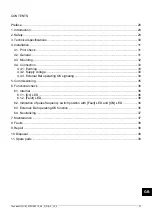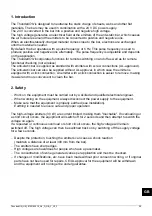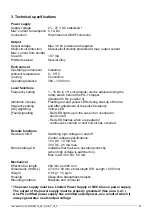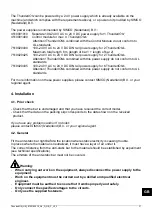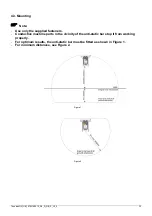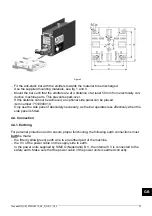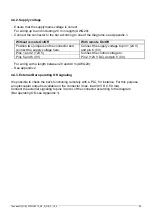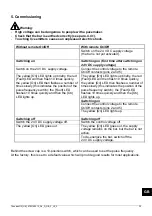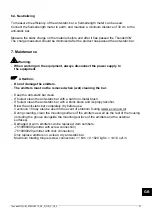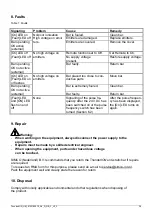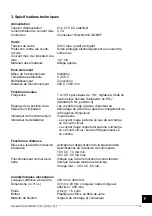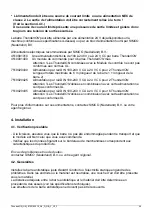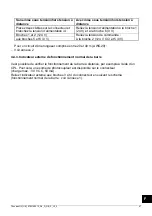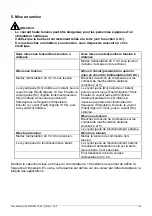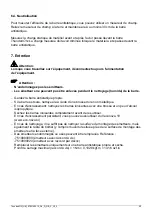
ThunderION_UM_9752160010_NL_D_GB_F_V2_2
35
GB
5. Commissioning
Warning:
-
High voltage can be dangerous to people with a pacemaker.
-
Check that the bar is earthed correctly (see para. 4.4.1).
-
Touching live emitters causes an unpleasant electric shock.
Without remote On/Off
With remote On/Off
Switch on the 24 V DC supply voltage
(the bar is not yet activated).
Switching on
Switching on (first time after switching on
24 V DC supply voltage)
Switch on the 24 V DC supply voltage.
Connect the control voltage to the remote
On/Off contacts (pins 2 and 5)
The yellow [On] LED lights up briefly, the red
[Fault] LED will then flash 10 times quickly,
the yellow [On] LED then flashes a number of
times slowly (this indicates the position of the
pulse frequency switch); the [Fault] LED
flashes 10 times quickly and then the [On]
LED lights up.
The yellow [On] LED lights up briefly, the red
[Fault] LED will then flash 10 times quickly,
the yellow [On] LED then flashes a number of
times slowly (this indicates the position of the
pulse frequency switch); the [Fault] LED
flashes 10 times quickly and then the [On]
LED lights up.
Switching
on
Connect the control voltage to the remote
On/Off contacts (pins 2 and 5)
The yellow [On] LED lights up.
Switching off
Switching off
Switch the 24 V DC supply voltage off.
Switch the control voltage off.
The yellow [On] LED goes out.
The yellow [On] LED goes out, the supply
voltage remains on the bar, but the bar is not
active.
To de-energize the bar, switch off the
24 V DC supply voltage.
Behind the screw cap is a 10-position switch, which can be used to set the pulse frequency.
At the factory, this is set to a default value which will provide good results for most applications.

